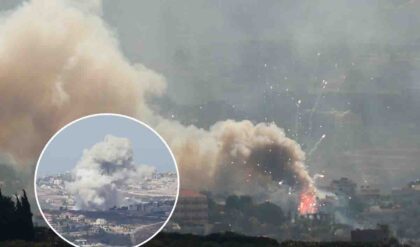TAKE a step into the dark, rusty tunnels built in the side of a cliff in Port Glasgow, Scotland.
But as daunting as the tunnels look, they have a fascinating history.

10
The creepy passageways were once used as a World War II air raid shelterCredit: www.mediadrumworld.com
The creepy passageways were once used as a World War II air raid shelter – and would have been a safe haven to those who needed refuge from the Nazi bombings.
The tunnels form a labyrinth like network and are thought to be one of the UK’s largest such shelters – with space for up to an impressive 1,000 people.
But what was once considered a zone of safety and security is now deserted and forgotten.
The chilling shots were taken by urban exploration group Abandoned Scotland who hope to draw attention to some of Scotland’s forgotten landmarks.

10
What was once considered a zone of safety and security is now deserted and forgottenCredit: www.mediadrumworld.com

10
The tunnels acted as shelter from bombs during WW2. Pictured is a smaller, family shelterCredit: Kemsley
Other pictures depict the remains of the toilets as well as the generator that would have been used to power the shelter.
According to Abandoned Scotland , the shelter itself was built by the Birkmyre family in preparation for WW2.
The Birkmyre family reportedly owned the nearby Gourock ropeworks – which has now been developed into flats.
The clan contributed considerably to the Inverclyde area as owners of the ropeworks, and the shelter was reportedly built for both the employees and their families.
Inverclyde underwent two nights of rigorous bombing in 1941 – with May 6 and 7 referred to as the ‘Greenock Blitz’ .

10
Air raid shelters, like this one in Portsmouth, were key in protecting people during the warCredit: Times Newspapers Ltd

10
According to Abandoned Scotland, the shelter itself was built by the Birkmyre family in preparation for WW2Credit: www.mediadrumworld.com

10
The chilling shots were taken by urban exploration group Abandoned ScotlandCredit: www.mediadrumworld.com

10
The Birkmyre family reportedly owned the nearby Gourock ropeworks – which has now been developed into flatsCredit: www.mediadrumworld.com

10
Other pictures depict the remains of the toilets as well as the generator that would have been used to power the shelterCredit: www.mediadrumworld.com

10
Approximately 246 people died in Greenock during the two nights, while 626 were injured – 290 of them seriouslyCredit: www.mediadrumworld.com

10
As daunting as the tunnels look, they have a fascinating historyCredit: www.mediadrumworld.com
Approximately 246 people died in Greenock during the two nights, while 626 were injured – 290 of them seriously.
A further 52 people were listed as ‘missing’ and presumed dead, with 74 killed in Port Glasgow, 30 of whom were in one shelter which was hit by a 250kg bomb.





